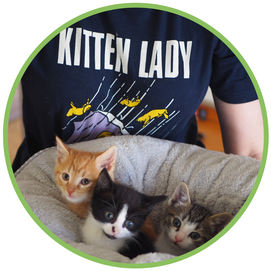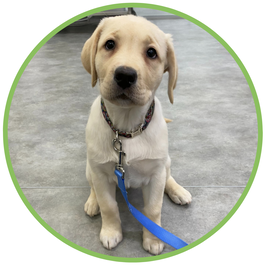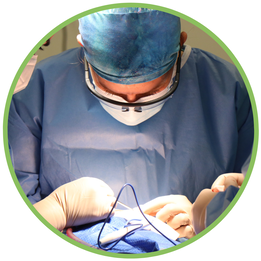Educational Resources
At Karrinyup Small Animal Hospital, we believe that informed pet owners make the best caregivers. That's why we've curated a comprehensive collection of educational materials to empower you with the knowledge and tools you need to keep your furry family members happy and healthy.
Our team of experienced veterinarians and animal experts have collaborated to provide you with reliable, up-to-date information that will help you make informed decisions about your pet's well-being.
Feel free to browse our educational resources, and if you have any questions or need personalised advice, don't hesitate to reach out to our compassionate and dedicated team. Together, we can ensure a lifetime of happiness and health for your cherished companions.
Our team of experienced veterinarians and animal experts have collaborated to provide you with reliable, up-to-date information that will help you make informed decisions about your pet's well-being.
Feel free to browse our educational resources, and if you have any questions or need personalised advice, don't hesitate to reach out to our compassionate and dedicated team. Together, we can ensure a lifetime of happiness and health for your cherished companions.
Cat Bite AbscessCat bite abscesses are a prevalent concern for cat owners and their feline companions.
These painful and potentially serious infections can occur when a cat's sharp teeth puncture the skin, introducing bacteria deep into the tissue. While these abscesses may start as small wounds, they can quickly escalate into a more significant health issue if left untreated. |
Anaesthetic Blood TestsBefore your pet undergoes a general anaesthetic, we recommend that they have their blood collected for a blood test profile. This can be done on the morning of the procedure. The parameters of the profile is case-dependent, as we select the appropriate tests to suit each particular health situation.
The most commonly run tests are described in the link as we explain what information we gather from them and why we recommend performing these tests. |
Brachycephalic Anaesthetic CareBrachycephalic breeds, like Bulldogs, Pugs, and Persian Cats, possess distinctive facial structures that can pose challenges during anesthesia.
Our team we have a customised anaesthetic protocol for brachycephalic dog and cat breeds, to increase their anaesthetic safety. |
Caring For Your New KittenBringing a new kitten into your family is an exciting time.
We are here to provide you with essential guidance and information to ensure your new kitten's health and well-being receives the utmost care and attention it deserves. |
Caring For Your New PuppyEmbracing a new addition to your family with a puppy can also come with an overload of information.
We are able to provide you with essential guidance and information to ensure your new puppy's health and well-being receives the utmost care and attention it deserves. We also run Puppy Preschool classes, which you can enquire here. |
Caring For Your RabbitRabbits are lovely pets and a new rabbit brings a lot of excitement and joy. As it is important to familiarise yourself with what it needs, here are all the necessary health care tips to get you started.
|
Tibial Plateau Levelling Osteotomy (TPLO)The TPLO is an orthopaedic surgery performed following the rupture of a cranial cruciate ligament within the knee.
The surgery helps to stabilise a knee so that your pet can regain limb function without relying on its cranial cruciate ligament. |
Cruciate Ligament RepairsCruciate ligament rupture is a common knee injury of human athletes (ACL).
These "acute" or sudden ruptures can occur in dogs, but they are much less common than a process called "Cruciate Ligament Disease". This is the name given to the complex of issues that occur in the knee as a result of cruciate injury. |
Cushing's DiseaseCushing's Disease is a problem of middle-aged dogs (5-8 years) whereby the adrenal glands overproduce cortisol. Cortisol is the 'stress' hormone that regulates the body's response to stress including blood sugar levels. It tends to affect females more than males.
|
Degenerative Mitral Valve DiseaseMost common acquired heart disease in dogs with clinical signs including a heart murmur. Pathophysiological changes to the heart may include dilatation of the left ventricle, left atrial enlargement and pulmonary hypertension (respiratory distress and fainting).
Middle-aged to older small to medium sized dogs are more likely to have an acquired adult-onset heart disease. In the case of the Cavalier King Charles Spaniel, the risk increases with age but can occur as young as 4 years of age. |
Diabetes Mellitus - CatDiabetes mellitus is one of the most common endocrine disorders in middle-aged to older cats. Diabetes can be diagnosed in any breed, age, or gender but is more commonly seen in older, overweight male cats.
|
Diabetes Mellitus - DogDogs more commonly develop Type 1 Diabetes Mellitus where there is insufficient production of the insulin hormone.
Insulin is required for the body to use the glucose that is available in the bloodstream. When insulin is not available, there is excess glucose in the blood stream, but the body’s cells are starved as they are unable to access this source of energy. |
Ear infectionsEar infections are typically caused by bacteria, yeast, or a combination of both.
Ear mites can also be a source of infection (mainly in puppies and kittens). Factors that may predispose your dog to ear infections include moisture (which can create a prime growing environment for bacteria and yeast), foreign objects (eg grass seeds), anatomical problems with ear canals and any underlying allergies. |
Eyelid LumpsEyelid lumps are fairly common and can occur in any breed, at any age, with older dogs over 10 years more commonly affected.
|
Feline AsthmaAsthma is a common complaint in cats that is incurable and often linked to allergies. It is the constriction of the airways due to inflammation that cause the cat to have difficulties in breathing.
Cat asthma occurs in young to middle-aged cats and is usually worse in warmer months and following time spent outdoors. Affected cats tend to have intermittent wheezing and coughing but are completely normal between episodes. |
Feline Resorptive Tooth LesionsResorptive Tooth Lesions are a common finding on oral examination of many cats. This condition is an erosion of the enamel and dentin of the tooth, causing painful exposure of the delicate tissues (blood vessels, lymphatic vessels and nerves) within the tooth’s pulp cavity.
Despite years of ongoing research, no cause or trigger has yet been definitively identified. Unfortunately, they are extremely painful and can affect a cat's ability to eat. |
|
Unit 5/207 Balcatta Road BALCATTA WA 6021
Phone: (08) 9447 4644 |
















